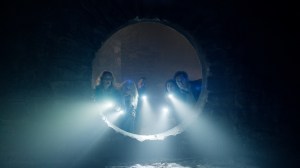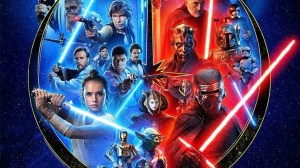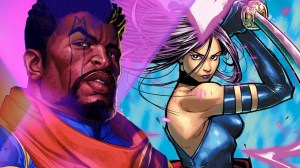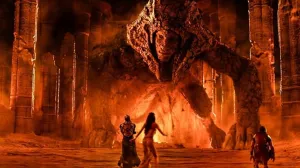Four years ago today, the DC Extended Universe was born as Man of Steel hit U.S. theaters and quickly became one of the most controversial superhero films ever made.
Videos by ComicBook.com

The film took Zack Snyder’s ultra-stylized filmmaking brand and applied it to John Byrne’s very alien Krypton and more human, relatable (read: less “perfect” version of Clark Kent from the comics.
And that’s even before a climax in which Superman felt he was backed into a corner and had to kill General Zod.
But we’re here to tell you that there’s a lot to love about Man of Steel, a movie that may not be perfect but is packed with strong filmmaking, emotionally effective character beats, and crazy alien tech that makes most other superhero movies look pretty unambitious in comparison.
So, what were our favorite moments from Snyder’s Man of Steel?
…We’re glad you asked.
BASICALLY EVERYTHING ON KRYPTON
The look and feel of Krypton in Man of Steel was incredible.
The attention to detail was impressive, drawing from various versions of the world’s comic book iterations; the soul of the world, and the oddball clothing worn by the ruling council, call back to John Byrne’s post-Crisis take, while the materials and designs of the wardrobe feel like Mark Waid and Lenil F. Yu’s Birthright…except that whole thing of everyone on the planet always wearing their family seal somewhere on their person, that feels kind of Silver Agey.
There are cool designs, cool creatures, and even Kelex!
It’s no wonder that when Syfy decided to develop a series based on the world of Krypton, the look and feel of Man of Steel‘s Krypton seems to be pervasive in building that show: even many of the reviews that hated Man of Steel, had little bad to say about Krypton (or, for that matter, Russell Crowe, who carried that portion of the film).
Perhaps most importantly, the world of Krypton felt distinctly alien — this wasn’t a world of people in robes against fairly ordinary backgrounds; Man of Steel introduced a world that felt lived-in; there was history, and religion, and all of the things that come with a world that exists for more than just the window-dressing of Superman’s origin.
It was a solid beginning to the film, and one of only a few things that basically everyone can agree works better than the Richard Donner version.

SAVING THE OIL RIG
If you’re a Superman fan, there’s a good chance that some of your favorite movie moments are the “super feats,” things he does in between punching bad guys that speak to the kind of hero Superman is.
There are a handful of such moments in Man of Steel, but probably the most significant one is the first time we see adult Clark in action, saving an oil rig that’s in the process of exploding.
There’s no Superman costume here, but the bearded Clark Kent, literally walking through fire to save a group of utterly baffled workers is a great visual, and the scope and scale (and especially the sound design) of saving the collapsing, burning platform is huge and impressive — dwarfing things like Christopher Reeve laying down to prevent a train from derailing, even if it isn’t quite as charming.
It also — along with much of the film’s first half an hour to an hour — addresses the frequent criticism that Superman “doesn’t save anybody,” but we won’t get into that here.
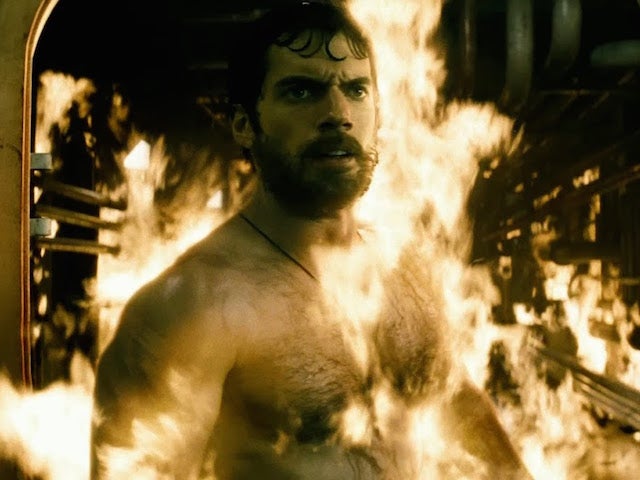
“THE WORLD IS TOO BIG”/”I DON’T WANT TO BE”
So much of the movie centered on Clark’s conflicted relationship with humanity, that when people started to tire of “emo Superman,” even the good stuff got a bit of a bad rap.
The first scene in Smallville, when young Clark experiences the onset of x-ray vision and super-hearing, was really effective. Trapped in a classroom setting wher ehe couldn’t easily sneak away in spite of his building horror, Snyder captured a young boy scared of his own changing body — a fairly universal theme in coming-of-age dramas — with a superhuman twist.
This is the kind of thing that the post-Crisis on Infinite Earths creators like John Byrne and Dan Jurgens often alluded to effectively, but rarely had time and page count to spend on detailing it. Putting it in gave context for Jonathan’s concerns, Clark’s reluctance to go public with his abilities, and more.
Shortly thereafter, we get the infamous “maybe” scene from Jonathan Kent, yes, but it’s overpowered by the emotional gut punch of the scene where he reveals the Kryptonian spacecraft to Clark and tells him about his significance to the universe.
Clark’s response — that he doesn’t want that responsibility — is heartbreaking, human, and feeds into the Christ metaphor that pervades the film, evoking the Garden of Gethsemane.
Honorable mention goes to the sequence in which a bullied and harassed Clark chose to go back and save a drowning Pete Ross,even after Pete had been teasing him mercilessly just moments before.
These moments speak to what helped to make Clark who and what he is in the DC Extended Universe.

FIRST FLIGHT
Shortly after the first time he gets the Superman costume on, Clark begins leaping — and eventually discovers that he is actually able to fly.
The blend of joy, confusion, and clumsiness with which he does this is charming as hell, and the humor is actually improved by Snyder’s addiction to the huge, to the widescreen.
The moment when Superman falls out of the sky and accidentally decimates half a mountain works as probably the best visual gag of the DCEU so far.
There was actually a precursor to this — in 1984’s largely forgettable Supergirl movie, in which her first flight went from tentative to joyful — but the director of that film lacked either the visual flair of Snyder or the technology to make the scene truly impressive.
Also, frankly, Clark has a personality in Man of Steel — something largely absent in Supergirl — and what’s more, his personality is pretty dour for the first bit of the movie. That means when you see this quiet, reserved, maybe even unhappy man suddenly crack a huge smile, it’s endearing as hell.

THE SUPERMAN/FAORA FIGHT
While the battle with Zod is the main focus of the film’s conclusion, it’s arguably not the best of the battle scenes.
Before Wonder Woman appeared onscreen to captivate audiences in Batman v Superman: Dawn of Justice, Antje Traue played Faora-Ul, Zod’s badass second-in-command and a character who spent more time than her boss in close-quarters combat, proving Superman’s mettle and nearly putting his face through the concrete in Smallville before the end.
(Zod, for his part, did more to push Superman’s limits, but a lot of that battle was digital, high-speed, and driven by flight and vision powers.)
She had Nam-Ek with her for a chunk of the fight, and much of that turned into kind of incomprehensible high speed three-way battery…but it was an energizing and frantic kind of action that felt more visceral than anything we had seen in a superhero movie before.

ZOD’S “DRAMATIC ENTRANCE”
Just moments after the military theorizes that General Zod is interested in making a “dramatic entrance,” the UFO which would later prove to be the Black Zero starts to show up in the sky and on TV.
Shortly after that, you get a Max Headroom-style media takeover, with every working electronic on Earth seemingly tuned to a signal from the Black Zero.
Zod, wearing a mask that makes him look far more inhuman than Michael Shannon’s handsome features usually allow for, declares to humanity that “you are not alone” and issues a statement, and a warning, worthy of a horror movie.
The fact that it plays so much to the fears that Clark’s parents have been instilling in him for his entire life makes it even more creepily effective.
It also lent itself nicely to one of the best viral marketing gimmicks in superhero movie history.

…AND INTRODUCING CLARK KENT
In the final moments of the movie, Man of Steel finally gives the audience the Clark Kent most of them were likely expecting when the film began.
Arriving for his first day of work with the Daily Planet, Clark bikes into the office wearing his glasses and “introduces” himself to Lois Lane with an aw-shucks smile.

MORE SUPERMAN NEWS
Superman flies back onto the big screen in this Warner Bros./Legendary Pictures production directed by Zack Snyder (Watchmen), produced by Christopher Nolan (The Dark Knight), and featuring a screenplay by David Goyer (Blade, The Dark Knight).
As the planet of Krypton crumbles, General Zod (Michael Shannon) stages a coup as concerned leader Jor-El (Russell Crowe) and his wife send their infant son Kal-El to a distant world called Earth. While the young child travels through space with an object containing the DNA of his home planet, General Zod and his cohorts are sentenced to an eternity in a black-hole prison.
Named Clark and raised by kindly farmers Jonathan (Kevin Costner) and Martha Kent (Diane Lane), young Kal-El lives in fear of what might happen should his neighbors learn about his extraterrestrial origins, eventually exploring the world in search of himself.
In time, Clark’s travels take him to a frozen tundra, where the American government has discovered an 18,000-year-old anomaly buried deep in the ice. Daily Planet reporter Lois Lane (Amy Adams) has just come to investigate when, after venturing out with her camera, she has a profound encounter with Clark. Convinced that his presence on Earth is proof of life on other planets, Lois finds her attempt to publish the story thwarted by her boss Perry White (Laurence Fishburne), who rejects it outright. Later, the airwaves are hijacked by General Zod, who threatens to obliterate the human race if they fail to hand over Kal-El within 24 hours.
Forced to embrace his otherworldly origins for the first time in his life, Clark Kent dons the special suit from Krypton and prepares to take a stand against an enemy far more powerful than any he’s ever known.
More Superman news:
Why Man of Steel is a Great Superman Movie
Is Warner Bros. Eyeing J.A Bayona For Man Of Steel 2?
Zack Snyder Shares New Man Of Steel Costume Test Image
DC Fan Takes A Screenshot Of Every Time Superman Saves Someone



